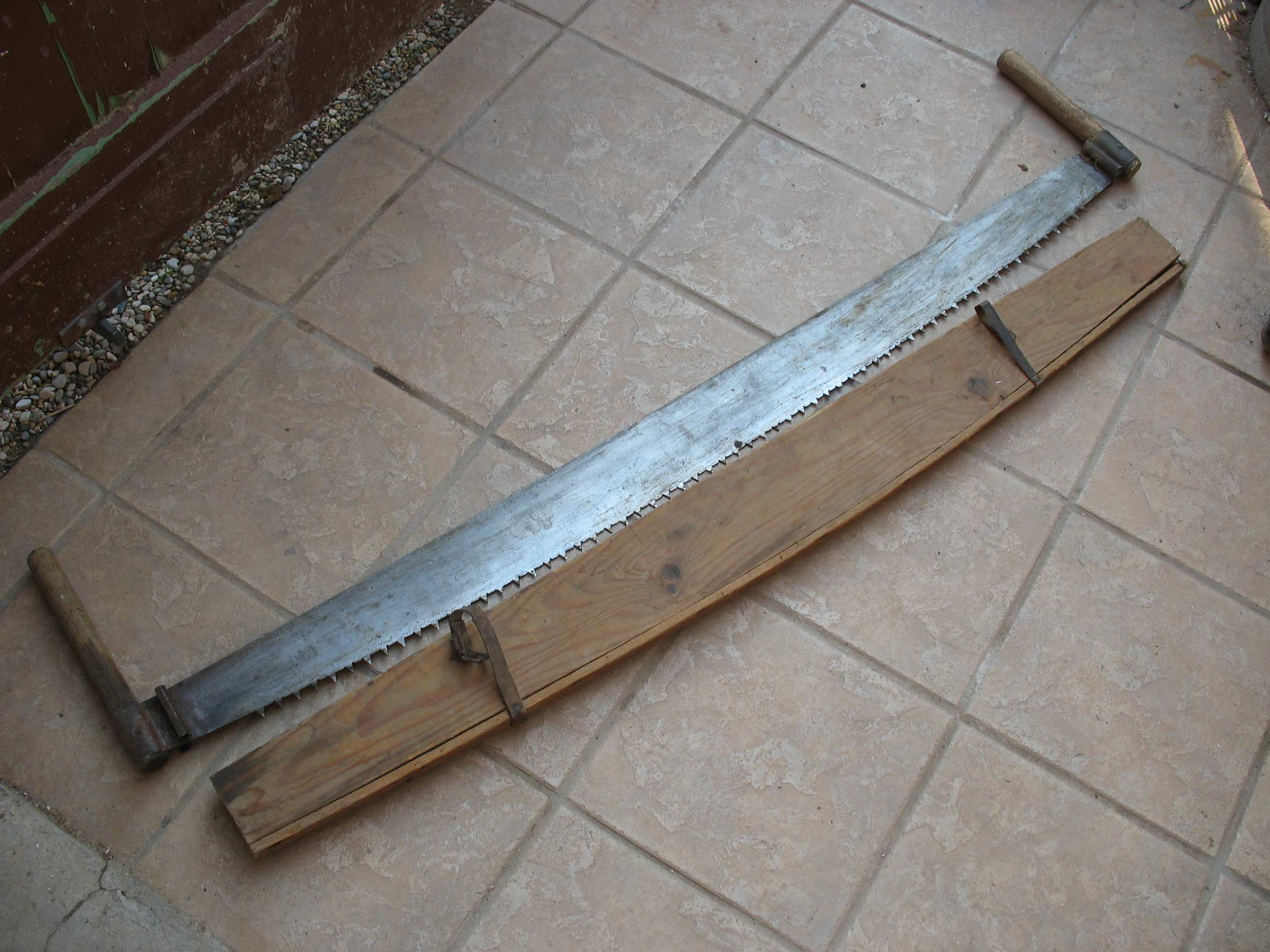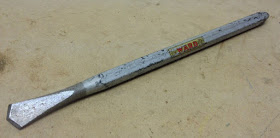Charles Hammond & Son was one of several forged hand tool manufacturers in the Philadelphia, PA area in the 19th and early 20th century. Hammond made many styles of hatchets, axes, brick and hand drilling hammers, and a variety of other hammers. Their lesser quality brands were Ogontz Tool Co. and Tacony Solid Steel. Hammond tools are highly regarded by collectors, and the business closed before suffering the quality decline that afflicted many makers in the late 20th century. Charles Hammond & Son's 1910 catalog is on
Archive.org or for sale at
Toolemera.com.
 |
| C. Hammond drilling hammer |
Charles R. Hammond was born 22 June 1805 in Newton, Massachusetts, the tenth child of Thomas Hammond and Sarah Winchester Hammond. In 1809, Hammond's parents moved the family to the
Shaker Religious Community in Harvard, Massachusetts, officially joining it 10 Jan 1811. This is where Charles grew to manhood and where he would have learned blacksmithing. Charles left the Shaker Religious Community on 17 Apr 1824, moving to Boston where he worked in manufacturing. Then he moved to Delaware County, PA, near Darby, where he began making cobbler's hammers and other tools required by shoemakers.
About 1844, Charles had accumulated the capital for a larger operation, and bought a former textile mill on a bend in
Tacony Creek, also spelled Tookany Creek, in Cheltenham Township, Montgomery County, PA, near Philadelphia. He rebuilt the buildings to produce hammers, hatchets, and other forged tools, using his name C. Hammond. The business remained at this location until it closed in the 1930s. Originally the area was rural with many
small industries along the creek. In contrast to most early tool works, Hammond was not in a town or even on a named road or railroad. As the surrounding population increased, the location's name changed from
Shoemakertown to
Ogontz and again to
Elkins Park. Even today, there is no public road that runs through the tool works location.
It's important to note that the Tacony Creek location, area name changes, and Hammond's early use of abbreviated "Philadelphia" on tools has caused confusion with Hammond's location. Tacony Creek flows through Philadelphia, changing names to Frankford Creek, emptying into the Delaware River next to the Betsy Ross Bridge. Tacony Creek gave its name to Tacony, the Philadelphia neighborhood further up the Delaware River where Henry Disston & Sons were located. Hammond had a sales office in 1871 at 13 N. 5th St., near Market St., and in 1901 rented an office at 523
Philadelphia Bourse. However, there is no indication in the historical record that Hammond's tool works were ever located anywhere than in the unincorporated area of Montgomery County.
In 1852, Charles made his son Charles Jr. a partner, and renamed the business Charles Hammond and Son. Charles Jr. was born in Boston, MA, 14 Oct. 1831, and learned all aspects of the business from his father. After Charles died 14 Feb. 1874, Charles Jr. continued to run it as his father had. With increasing demand, he expanded the works to cover 6 acres, with all critical building made of stone.
Charles Jr. died 6 Sept. 1899, and was lauded as an exemplary man in all ways, as his father had been. "
Mr. Hammond displayed in marked degree the traits of character and tastes which characterized the father. Like him he was held in genuine regard in all circles in which he moved. He held an assured and influential position among the manufacturers of his state, who recognized in him a capable and resourceful man of affairs. He was the soul of honor in every relation of life, and was among the foremost in promoting the welfare of the community by personal effort, example and generous contribution of his means."
The business then passed to Hubert Rosseau Hammond (6 Nov. 1835 to 1 Jan 1909), the son of Moses Winchester Hammond, the sixth child of Thomas and Sarah Hammond. Hubert married Sarah E. Yerkes on 31 Jan. 1859, and it's possible she was related to Jonathan Yerkes, of Yerkes and Plumb, Philadelphia. This
2-page Pennsylvania state report gives various facts about forged tool makers and their employees in 1906.
 |
| C. Hammond brick hammer |
At Hubert's death, control went to Charles Hammond Culin (1 Oct. 1867 to 27 Nov 1943). Culin was the brother of Emma F. Culin, Mrs. Charles Hammond Jr. Culin's father George F. Culin (b. 1832) had befriended the elder Hammond and the Culin family was living with Hammond in 1870. By 1880, George F. Culin was bookkeeper for the tool works.
During this period business declined, according to state records. In 1916 the works employed 48 men and 1 woman, and 5 in the office. In 1920 it was 43 men in the works and 5 office, and 1922 only 32 men in the works and 4 office.
Earl Culin Hammond (1890-1968), Charles and Emma's only son, was also a member of the firm when he registered for the World War I draft. In the 1930 US Census, his occupation was "Manufacturer, Tools", meaning that the business was still operating. In 1940, he had changed occupations to "Assistant Director, School of Music".
Charles H. Culin's 1930 occupation was also "Manufacturer, Tools". By the 1940 US Census, he had retired, with the business presumably closed. His home at 220 Church Rd. was adjacent to the entrance to the tool works. The house is well-preserved and there is a well-worn grindstone at the left, where a private drive leads back to several secluded houses on the Charles Hammond and Son site. At least 2 of these are converted tool works buildings. Identical stone walls and pillars mark several properties surrounding the former Hammond property, on Church Rd., New Second St., and Harrison Ave. This suggests that the Hammond family and their employees built houses next to their workplace, and that the Hammonds appreciated stone masonry.
As an aside, the elder Charles's older brother
Thomas Hammond (1791-1880) wrote the music to several Shaker hymns, and 8 musical works total.













 Lock Tools, Ltd. was a secondary brand of William Hunt & Sons, The Brades, Ltd. Lock Tools was incorporated 8 Nov. 1940, with the address of City Road, Brades, Oldbury. It was independent in later years and dissolved in 1982. Their label featured Lock Tools Ltd. in a circle, with City Road Oldbury in large type around the outside of the circle.
Lock Tools, Ltd. was a secondary brand of William Hunt & Sons, The Brades, Ltd. Lock Tools was incorporated 8 Nov. 1940, with the address of City Road, Brades, Oldbury. It was independent in later years and dissolved in 1982. Their label featured Lock Tools Ltd. in a circle, with City Road Oldbury in large type around the outside of the circle.








